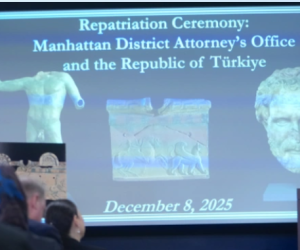Astronomer takes jaw-dropping photos of galaxies from his garden - PHOTO

An array of colours, from pinks to blues and oranges, fill the night sky to create an amazing collection of interstellar patterns.Captured up to 20 million light-years away, this is stargazing at its best. But these incredible images weren't taken by a deep-space probe, they were snapped by sales manager Terry Hancock, 60, from the comfort of his back garden.He was able to capture the astounding images from his back garden in Michigan, US with the help of two CCD cameras, a QHY9M and a QHY11S.'My astronomy photographs all show deep sky objects, many of them thousands or millions of light years away from Earth,' says Terry, originally from Burnley, Lancashire.'The wonders of our universe are infinite.'The idea of gazing up into the night sky and being able to capture these beautiful clusters, nebulae and galaxies thousands to many millions of light years away really fascinates me. 'The night sky is a virtual time machine that existed way before mankind existed, which I just find amazing.'Capturing scenes from 5,000 to 20 million light years away, Terry only needs a digital camera, a telescope, a German equatorial mount (an object used to follow the rotation of the sky) and a laptop.Terry explains: 'The majority of my images consist of 10 minute to hour-long exposures and combined exposures of between 10 and 40 hours long.'A DSLR camera is hooked up to a telescope which is essentially a giant telephoto lens.'This telescope along with other equipment is connected to an equatorial mount, instead of a tripod, and it follows the target across the sky as the earth rotates.'At the end of a project each exposure is combined to equal the total exposure time and then stacked together to create one single image.'I get a lot of brilliant reactions from the public, from sheer amazement to non-belief.'I meet thousands of people from all over the world and many are amazed that pictures like this could be taken using modest equipment from a small backyard observatory.'(dailymail.co.uk)ANN.Az
Latest news 
More news 



































 Photo
Photo 



 Video
Video 

